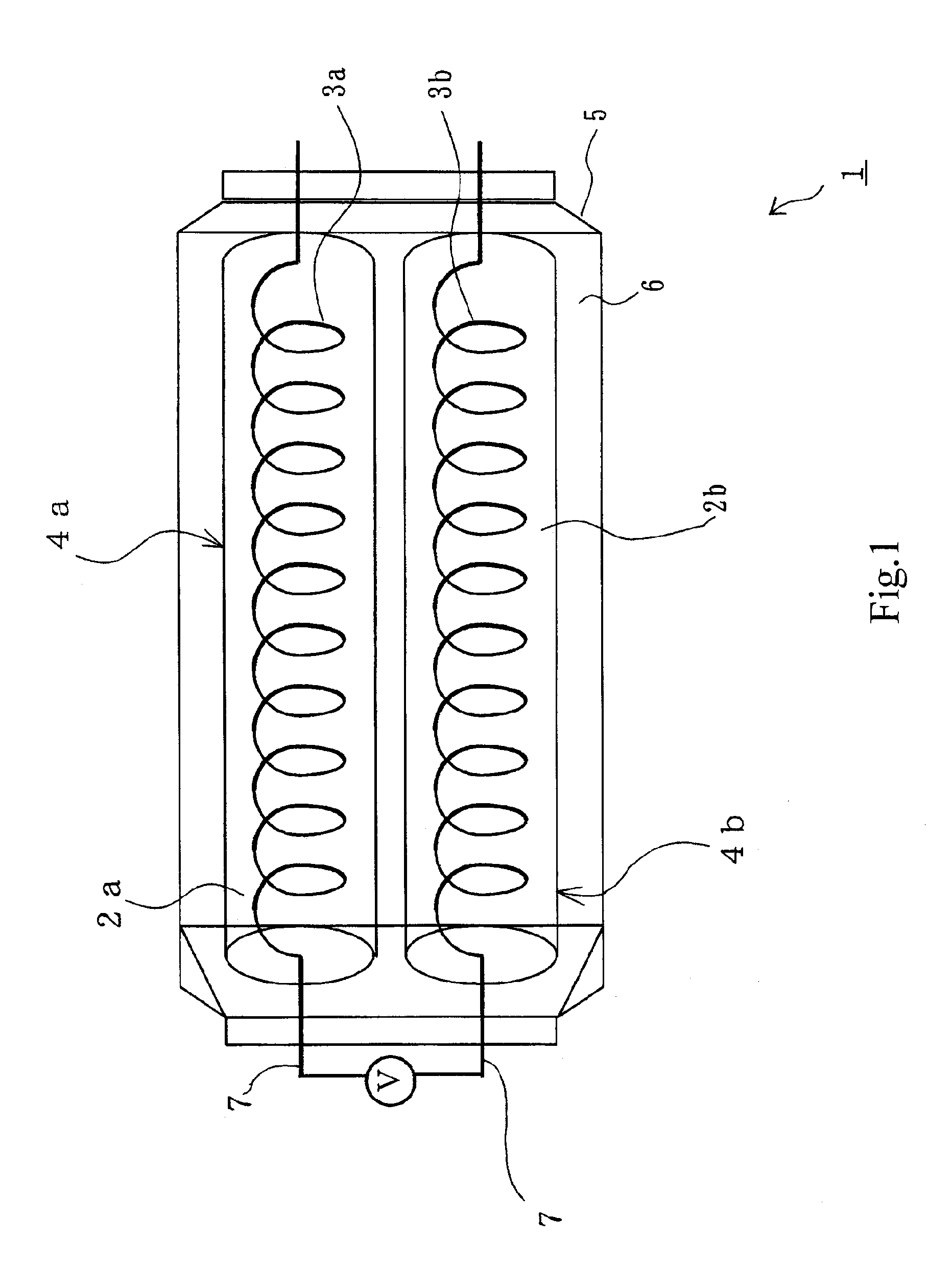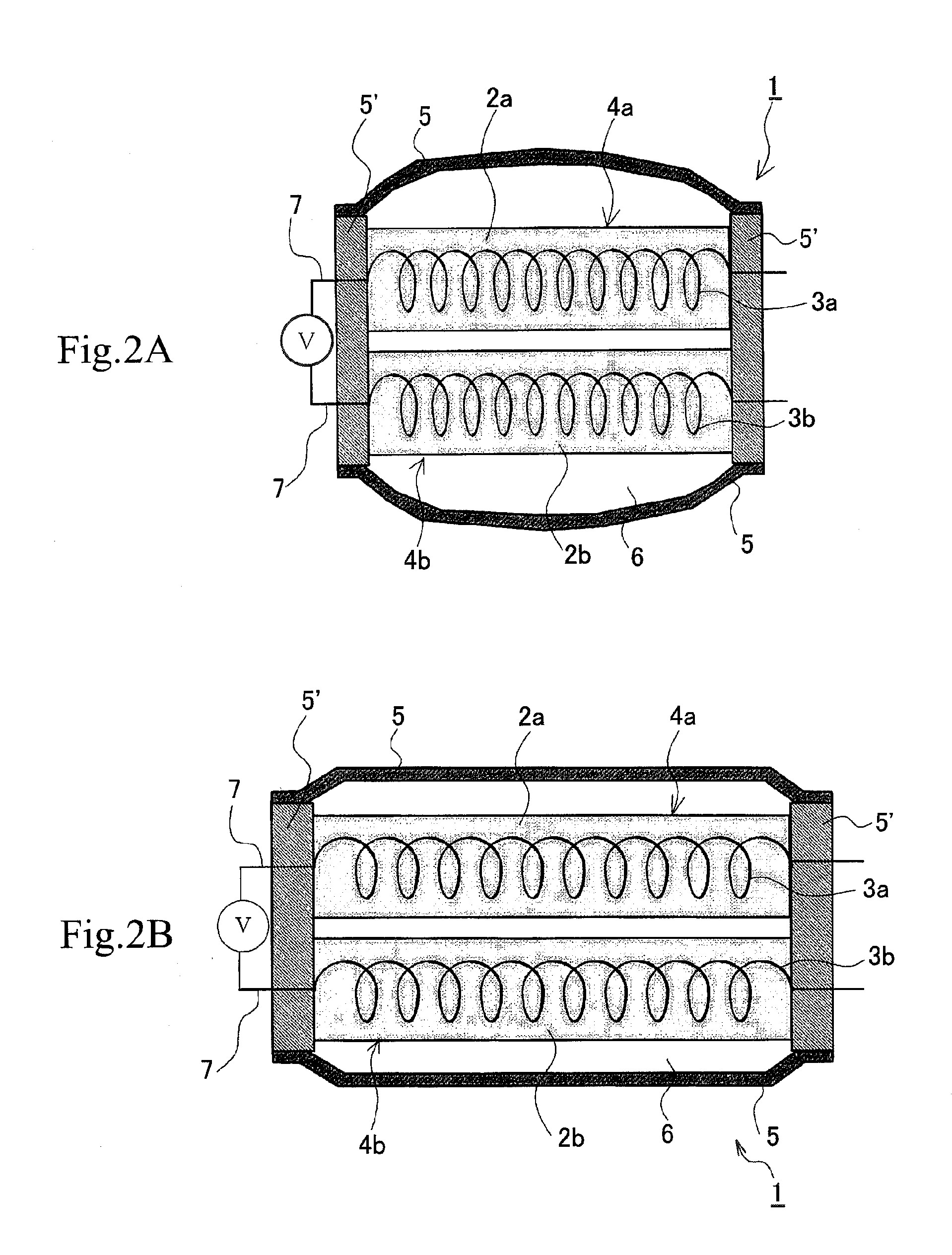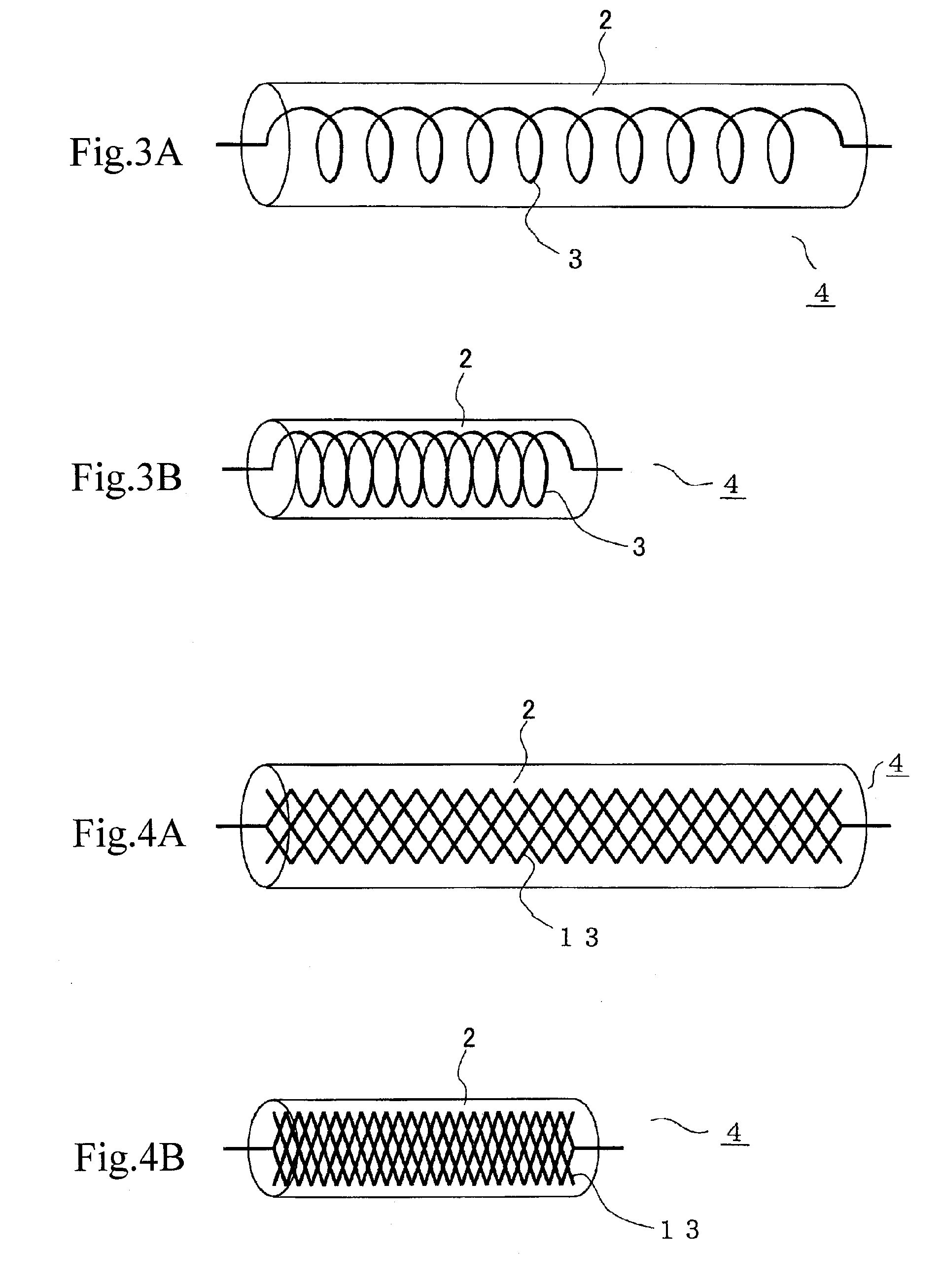Polymer actuator
a technology of actuators and polymers, applied in the direction of generators/motors, mechanical equipment, machines/engines, etc., can solve the problems of large outputs of powerful actuators, heavy weight of actuators, and large weight of actuators
- Summary
- Abstract
- Description
- Claims
- Application Information
AI Technical Summary
Benefits of technology
Problems solved by technology
Method used
Image
Examples
example 1
[0069] In this example, the polymeric hydrogel for the gel / electrode complexes is prepared from an aqueous solution of monomer, crosslinking agent, and initiator by radical polymerization.
[0070] The monomer for the polymer having acidic functional groups is sodium acrylate. The crosslinking agent is N,N′-methylenebisacrylamide. The initiator is ammonium persulfate. The aqueous solutions (as the gel precursor) is composed of the monomer, crosslinking agent, and initiator in a molar ratio of 100:3:1.
[0071] The electrode is a coil (1 mm in diameter) of platinum wire (10 μm in diameter). It is placed in a glass tube, 1.5 mm in inside diameter and 30 mm long, and then it is fixed so that the axis of the coil coincides with the axis of the glass tube.
[0072] The glass tube is filled with the gel precursor solution. With its both ends closed by rubber stoppers, the filled glass tube is heated at 50° C. so that the gel precursor solution undergoes gelation. The resulting gel is discharged...
example 2
[0081] In this example, the polymeric hydrogel for the gel / electrode complexes is prepared from an aqueous solution of monomer, crosslinking agent, and initiator by radical polymerization.
[0082] The monomer for the polymer having acidic functional groups is acrylic acid. The monomer for the polymer having basic functional groups is dimethylaminoethyl methacrylate. The crosslinking agent is N,N′-methylenebisarcylamide. The initiator is ammonium persulfate. The aqueous solution (as the gel precursor) is composed of the acidic monomer, basic monomer, crosslinking agent, and initiator in a molar ratio of 50:50:3:1.
[0083] The electrode is a coil (1 mm in diameter) of platinum wire (10 μm in diameter). It is placed in a glass tube, 1.5 mm in inside diameter and 30 mm long, and then it is fixed so that the axis of the coil coincides with the axis of the glass tube.
[0084] The glass tube is filled with the gel precursor solution. With its both ends closed by rubber stoppers, the filled gl...
example 3
[0090] The same procedure as in Example 1 was repeated to prepare the polymer actuator except that the gel precursor solution was incorporated with as much Pd powder as 10 wt % of the monomer.
[0091] The resulting polymer actuator was tested by applying a voltage of 2 V across the acidic gel / electrode complex (as an anode) and the basic gel / electrode complex (as a cathode). It was found that polymer actuator decreased in length between the heat-sealed parts from 45 mm to 31 mm as the result of contraction of both of the gel / electrode complexes. During contraction, no gas evolution from the gel / electrode complex was noticed.
PUM
 Login to View More
Login to View More Abstract
Description
Claims
Application Information
 Login to View More
Login to View More - R&D
- Intellectual Property
- Life Sciences
- Materials
- Tech Scout
- Unparalleled Data Quality
- Higher Quality Content
- 60% Fewer Hallucinations
Browse by: Latest US Patents, China's latest patents, Technical Efficacy Thesaurus, Application Domain, Technology Topic, Popular Technical Reports.
© 2025 PatSnap. All rights reserved.Legal|Privacy policy|Modern Slavery Act Transparency Statement|Sitemap|About US| Contact US: help@patsnap.com



